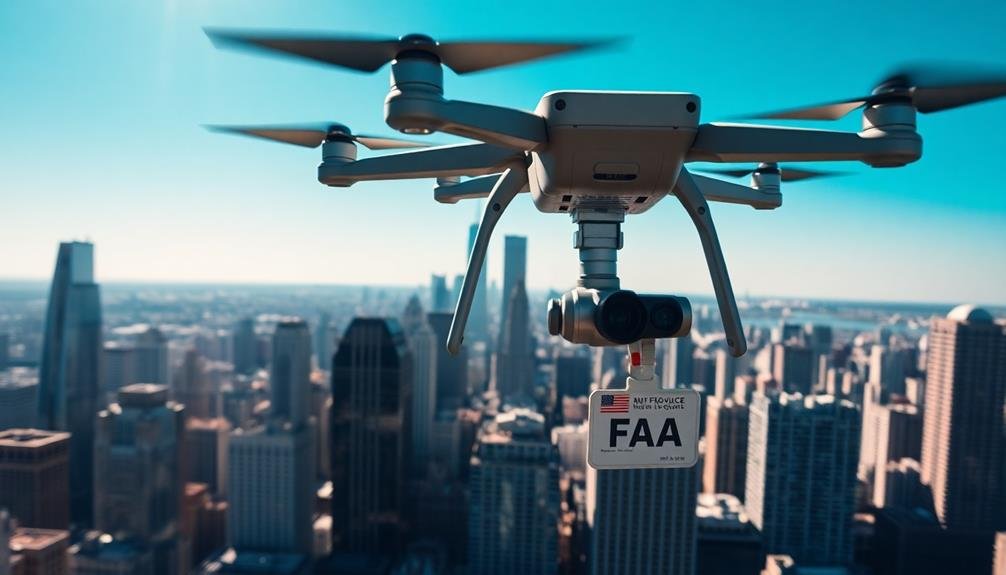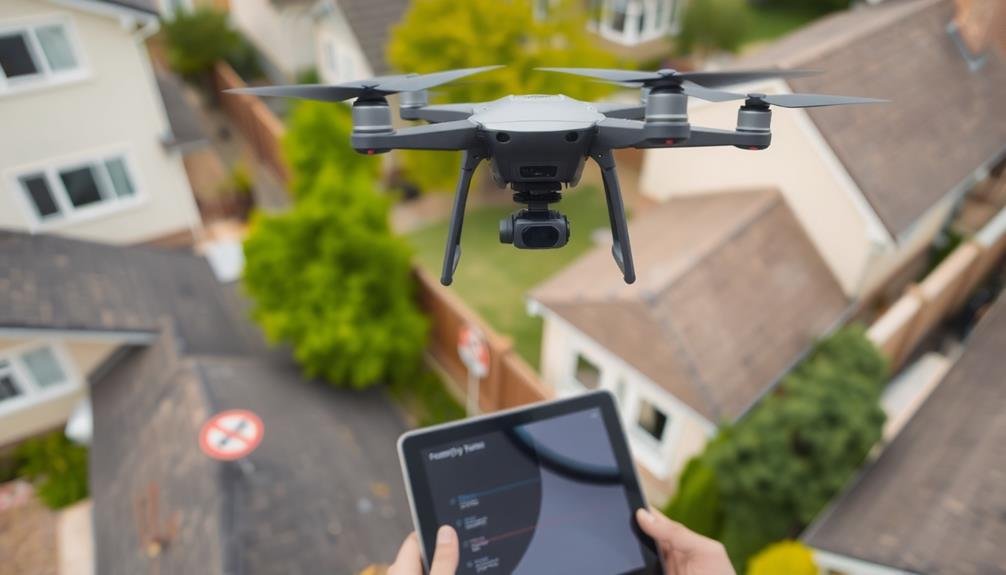When capturing real estate from above, you'll need to follow three key rules. First, obtain proper licensing, including an FAA Remote Pilot Certificate for commercial drone operations. Second, respect privacy and property rights by getting permission before photographing homes or land, and avoid capturing identifiable individuals without consent. Third, adhere to airspace restrictions by staying below 400 feet, maintaining visual line of sight, and avoiding no-fly zones. Use apps like B4UFLY to check for flight restrictions in your area. By mastering these rules, you'll be well on your way to creating stunning aerial imagery while staying compliant and ethical.
Key Takeaways
- Obtain proper FAA licensing, including a Remote Pilot Certificate for commercial drone operation.
- Respect privacy by avoiding capture of identifiable individuals and obtaining property owner permission.
- Follow airspace restrictions, staying below 400 feet and avoiding no-fly zones.
- Maintain visual line of sight with the drone at all times during operation.
- Use apps like B4UFLY to check for temporary flight restrictions before each photography session.
Obtain Proper Licensing

Before diving into real estate photography, you must guarantee you're operating within the law. This means obtaining the proper licenses and certifications required for aerial photography in your area.
In many countries, including the United States, you'll need a Remote Pilot Certificate from the Federal Aviation Administration (FAA) to fly drones commercially. To get your license, you'll need to pass an aeronautical knowledge test and meet other eligibility requirements.
Once certified, you must register your drone with the FAA and follow their guidelines for commercial drone operations. These rules include flying below 400 feet, maintaining visual line of sight, and avoiding restricted airspace.
Additionally, check local regulations as some cities or states may have specific rules for drone usage. You might also need insurance to cover potential damages or liabilities.
Don't forget to get property owners' permission before flying over private land. Staying compliant isn't just about avoiding fines; it's about maintaining professionalism and ensuring client trust.
Keep your licenses current and stay informed about changes in regulations to protect your business and reputation in the real estate photography industry.
Respect Privacy and Property

Privacy is paramount in real estate photography. When capturing aerial shots of properties, you must respect the privacy of neighboring homes and individuals. Avoid including identifiable people in your images without their consent. Be mindful of windows, balconies, and outdoor spaces where residents might expect privacy.
Always obtain permission from the property owner before photographing their home or land. Don't trespass on adjacent properties to get a better angle. Stick to public spaces or areas where you have explicit permission to operate your drone. Be aware of local laws regarding drone flights over private property.
Respect the integrity of the property you're photographing. Don't alter or stage the property without the owner's consent. Capture the home as it is, avoiding misleading representations. If you need to move items or make minor adjustments, always return them to their original positions.
Be considerate of the environment and wildlife. Avoid disturbing natural habitats or causing stress to animals. Keep noise levels to a minimum and maintain a safe distance from trees, nests, and other sensitive areas.
Follow Airspace Restrictions

Understanding and adhering to airspace restrictions is essential for drone operators in real estate photography. You must familiarize yourself with local, state, and federal regulations governing drone flights. Check for no-fly zones, controlled airspace, and temporary flight restrictions before each shoot. Use apps like B4UFLY or AirMap to verify the airspace status of your location.
Remember to maintain visual line of sight with your drone at all times and fly below the maximum altitude limit of 400 feet. Don't operate near airports or heliports without proper authorization. Be aware of privacy concerns and avoid flying over people or private property without permission.
| Airspace Type | Restrictions | Requirements |
|---|---|---|
| Class G | Generally open | Basic registration |
| Class B, C, D | Controlled | LAANC authorization |
| Restricted | Limited access | Special permission |
Always prioritize safety and follow the FAA's guidelines for commercial drone operations. Obtain your Part 107 certification if you're flying for commercial purposes. Keep your drone registration current and display your registration number on the aircraft. Stay informed about changing regulations and update your knowledge regularly to guarantee compliance with airspace restrictions.
Frequently Asked Questions
What Camera Equipment Is Best for Aerial Real Estate Photography?
You'll want a high-resolution drone with a quality camera, like the DJI Mavic 3 or Autel EVO II Pro. Don't forget extra batteries, ND filters, and a tablet for better viewing. A standard DSLR is useful for ground shots too.
How High Should I Fly for Optimal Real Estate Shots?
You'll want to fly between 200-400 feet for ideal real estate shots. It's high enough to capture the property's layout but low enough to show details. Adjust based on the home's size and surroundings.
What Time of Day Provides the Best Lighting for Aerial Photography?
You'll get the best lighting for aerial photography during the "golden hours" – just after sunrise or before sunset. Soft, warm light enhances colors and reduces harsh shadows, creating stunning images. Avoid midday when light's too harsh.
How Do I Stabilize My Drone in Windy Conditions?
You'll want to use your drone's built-in stabilization features, like GPS hold and altitude lock. Fly in sport mode for better wind resistance, and keep your movements slow and smooth. Don't forget to adjust your camera settings accordingly.
Are There Post-Processing Techniques Specific to Aerial Real Estate Photos?
You'll want to focus on enhancing colors, balancing exposure, and straightening horizons. Don't forget to remove lens distortion, adjust contrast, and add sharpness. Consider using HDR techniques to bring out details in shadows and highlights.
In Summary
You've learned the essential rules for capturing stunning aerial real estate photos. Remember to get your drone license, respect privacy, and follow airspace regulations. As you take to the skies, you'll create eye-catching visuals that'll set your listings apart. Keep practicing and refining your skills, and you'll soon master the art of real estate sky-high photography. With these guidelines in mind, you're ready to elevate your property marketing to new heights.

As educators and advocates for responsible drone use, we’re committed to sharing our knowledge and expertise with aspiring aerial photographers.




Leave a Reply